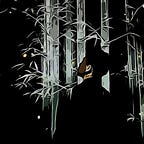Philosophy of Art: Aestheticism and Decadence
The movements that paved the way for modernity in art
Art, though highly diverse in its range, can be defined as activity engaged in creating visual, auditory, or other sensory performed artifacts, which we now term as artwork, that expresses imaginative or technical skill, intended to be appreciated for their beauty or emotional potency.
In spite of the seemingly indefinable nature of art, it is often examined through the interaction of artistic principles and elements. These principles include movement, unity, variety, balance, contrast, harmony, proportion and pattern. And the elements of art is that of texture, form, space, shape, color, value, and line.
The various interactions between both principles and elements help artists organize sensorially pleasing works that is often subject to frameworks of analysis and discussion.
Art can be characterized in terms of expression, communication of emotion, or a vast multitude of other qualities — of which, an emergent character is dominant in its presence. That of mimesis. In other words, the artwork’s representation of reality.
In earlier centuries, art was rather limited to dominant preferences and notions of the masses, as evident from the Victorian era with their preference for…
